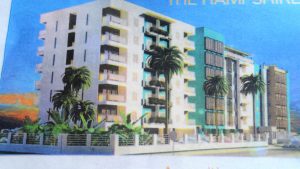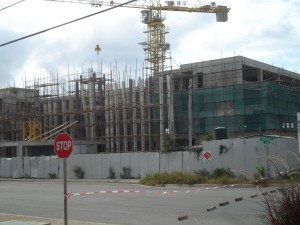
The Jamaican economy could grow by more than 6 percent in 2022, with continued growth in tourism and the Alcoa Alumina plant back in production in late August and could lift the December quarter growth above the 5.9 percent that Statin reported for the September quarter. The strong second half year growth should carry over into 2023, coming from an average increase of 5.73 percent for the period up to September and will be boosted by the expected continued strong resurgence of the tourism sector in 2023, barring unforeseen adverse developments, along with the impact of production from the reopening of the Jamalco Alumina plant that will add quite a bit to growth going into the first half of 2023.
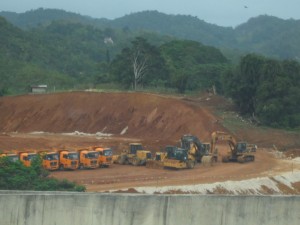
Mining to contribute to GDP gains in 2023
Inflation is still not entirely under control yet, but it peaked in 2021, with the average for 2022 running close to the upper end of the central bank’s target of 4 to 6 percent. Developments that should help decrease the rate include world oil prices that have fallen substantially from the over $US120 experienced after the Ukraine war started and are now around US$80 a barrel. Prices of some other commodities are reduced and others could follow as a push of interest rates by several developed countries is set to tighten economic activities and trim demand. A tighter labour market, locally, could put upward pressure on wages and prices, but the tighter monetary policy from last year could hold prices down for a while.
Growth is not only expected from the above two areas. Assuming fair weather conditions, Agriculture, the star performer in the economy for several years, should continue its contribution in 2023. The sector will be helped by growth in tourism that feeds off the industry. The BPO sector seems poised to continue to add to growth as well as the construction sector, with continued growth in housing, road construction and the need for factories and warehousing space. There may well be a lull in the sector with the two south coast roads coming to completion in 2023: the Harbour View to Portland leg and the May Pen to Williamsfield leg of Highway 2000. The Montego Bay perimeter road should take over but may not fill the gap. This may not happen until the Montego Bay to Ocho Rios dualisation commences and is well on the way.
Why is tourism so important? Data shows that for the first quarter in 2022, stopover arrivals were 28 percent below arrivals for 2019, with the June quarter off by 3.3 percent, but September to November increased an average of 12 percent, which means that the first quarter in 2023 could see a 50 percent increase over 2019 and much more over 2022 in the first half on 2022.
Tourist arrivals into Jamaica are now running at record levels since August 2022. Data shows the country enjoying four consecutive months of arrivals exceeding similar months in 2019, the previous best period. Airport passenger movements through the Sangster Airport are up an average of 12 percent for the September to November period.
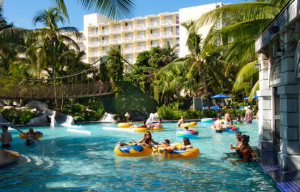
Growth in tourism is expected to be big in 2023
If the recent trend continues, it would mean that stopover arrivals should be in the order of 3 million next year, up from 2,680,920 in 2019 and would exceed those in 2022 by a solid 20 percent, with the winter months enjoying much higher levels of growth as shown above.
The strong rebound in tourism traffic in the first half of the year, compared with 2022, will contribute to above average GDP growth in the first half but will also result in a significant jump in revenues and profits for some companies and the government. This will have significant implications for the foreign exchange market with significantly increased flows, especially in the year’s first half. This development could also impact interest rates as BOJ may no longer have to lend much support to the local currency using high interest rates.
ICinsider.com don’t see interest moving higher and most likely will start to decline before midyear, with inflation within reach of the BOJ target of 4-6 percent in 2022 and with interest rates seeming to peak at 8.46 percent from April 2022 and remaining at the 8 percent level since based on 182 days Treasury bills.
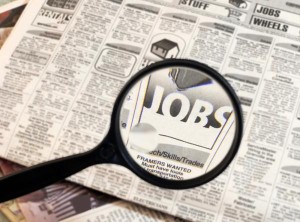
Jamaica’s labour market has tightened and could pressure inflation in 2023.
Unemployment at 6.6 percent in July is expected to fall in 2023 towards the 5 percent region as more workers will be needed to man the economic expansion. This could mean wage increases could rise above normal to retain or attract new workers.
But all the above is good news for the private sector overall, that should see increasing demand for goods and services.
The banking sector showed loans growing at an annual pace of 12 percent up to September 2022, data from the Bank of Jamaica shows up to $1,096 billion, but increased loan rates may be negatively affecting some areas. With what could be a year of reducing interest rates engineered by BOJ, there could be even faster loan growth in 2023 than in 2022.
Remittances in 2022 appear they will fall short of the US$3.5 billion generated in 2021 and could come in at just over $3.4 billion for the year, reaching $2.84 billion to October. It may again slip marginally in 2023 since the big surge that took it from $2.4 billion in 2019 to the $3.5 billion level.
Net International Reserves. Jamaica’s Net International Reserves are in a healthy position with a jump of $75 million to $3.85 billion in November, data released by the Bank of Jamaica shows, an improvement over October at $3.77 billion. This year’s November balance is at the highest monthly balance for 2022 but is down US$150 million from the end of December last year with a net of $4 billion. Data from the Bank of Jamaica shows a US$100 million growth to Mid December 2022 that would push the net to around US$3.95, just shy of US$4 billion. Daily trades in the forex market after mid-December suggest a continued buildup of the reserves that should push it over the US$4 billion mark by the end of 2022, with the exchange rate for the Jamaica dollar appreciating 152 to the US dollar at the end of the year.

Road construction could slow growth in the sector in 2023
With the significant rebound in tourism, a resurgence in the Alumina sector and relatively stable remittances and BPO sectors, the country should enjoy record foreign exchange inflows in 2023.
Developments on the foreign exchange front could result in greater stability in the exchange rate for the local dollar. Investors should not be too surprised if there is some revaluation, especially in the first half.
The entertainment and transportation sectors seem poised to get a shot in the arm and benefit from the rebound in tourism, increased employment in the country and the general buoyancy in the wider economy.
The present government will be in power for three years at the end of August, but the last public opinion polls indicate a huge lead over the opposition party; with such a lead, the government is in the driver’s seat as to when elections will be called. But the opposition party could start revving up their machinery, so there could be a fair bit of noise to contend with. Local government elections are due in 2023 and barring some significant negative development these elections appear as if they will proceed as planned. If the opposition does well in these elections, it could result in the political heat being turned up a notch or two. If they don’t things will quiet down as the odds favour the government going the full term.
The above are positive developments but investors cannot ignore the impact that the war in Ukraine has had and could have going forward as well as concerns about the covid19 problems in China and how that could affect the world economies.
Reports to follow – Interest rates and the stock market. Outlook for stocks in 2023. Top 15 stocks. Stocks to watch in 2023.
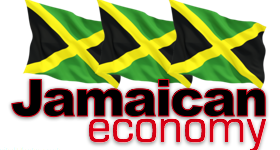 Jamaica will see steady growth with improvements in several areas during the year, with increased output for manufacturing, tourism, finances and other service sectors such as BPO and entertainment. The continuation of major road construction projects and many new buildings going up in the country will also aid the continuation of economic growth during the year.
Jamaica will see steady growth with improvements in several areas during the year, with increased output for manufacturing, tourism, finances and other service sectors such as BPO and entertainment. The continuation of major road construction projects and many new buildings going up in the country will also aid the continuation of economic growth during the year. Data out of Statin indicates a 4.9 percent increased output in the manufacturing sector for the September quarter, helped by gains in PetroJam production. That is faster than the July quarter, with growth of 3.2 percent and the first quarter growth with negative 1.3 percent following a 2.4 percent increase in the December 2018 quarter. The trend is positive for the manufacturing sector and augurs well for a good increase in 2020. Continued growth in loan financing and increasing interest of companies seeking fresh long-term capital through the capital market are big positives for the business sector in 2020 and beyond. The Manufacturing sector’s use of borrowed funds, excluding cement, was consistent with 20 percent increased borrowing in 2019 and 2018.
Data out of Statin indicates a 4.9 percent increased output in the manufacturing sector for the September quarter, helped by gains in PetroJam production. That is faster than the July quarter, with growth of 3.2 percent and the first quarter growth with negative 1.3 percent following a 2.4 percent increase in the December 2018 quarter. The trend is positive for the manufacturing sector and augurs well for a good increase in 2020. Continued growth in loan financing and increasing interest of companies seeking fresh long-term capital through the capital market are big positives for the business sector in 2020 and beyond. The Manufacturing sector’s use of borrowed funds, excluding cement, was consistent with 20 percent increased borrowing in 2019 and 2018. Growth in the construction sector will pick up, with the start of the Kingston to Port Antonio road construction and demand continues in the BPO sector that will stimulate the need for more space while adding to employment. Data out of the Bank of Jamaica shows a sharp rise in lending to the sector with an increase of 37 percent over the amount lent in 2018 and well ahead of the 27 increase in 2018 over 2017. The increase in 2019 suggests a further rise in growth in the sector, which should continue into 2020.
Growth in the construction sector will pick up, with the start of the Kingston to Port Antonio road construction and demand continues in the BPO sector that will stimulate the need for more space while adding to employment. Data out of the Bank of Jamaica shows a sharp rise in lending to the sector with an increase of 37 percent over the amount lent in 2018 and well ahead of the 27 increase in 2018 over 2017. The increase in 2019 suggests a further rise in growth in the sector, which should continue into 2020. The Foreign exchange market went through a number of changes as the central bank reduced the compulsory take from the market from 25 percent down to 20 percent for dealers and 15 percent for Cambios. In effect, the central bank bought no funds from the market through its weekly intervention tool and had no scheduled sale to the market. About four bouts of strong demand resulted in BOJ intervening by selling funds to the market. Notwithstanding, the interventions, the central bank ended the year with the NIR rising from US$3.005 billion at the end of December 2018 to US$3,16 billion after the NIR sank to US$2.95 billion in July.
The Foreign exchange market went through a number of changes as the central bank reduced the compulsory take from the market from 25 percent down to 20 percent for dealers and 15 percent for Cambios. In effect, the central bank bought no funds from the market through its weekly intervention tool and had no scheduled sale to the market. About four bouts of strong demand resulted in BOJ intervening by selling funds to the market. Notwithstanding, the interventions, the central bank ended the year with the NIR rising from US$3.005 billion at the end of December 2018 to US$3,16 billion after the NIR sank to US$2.95 billion in July.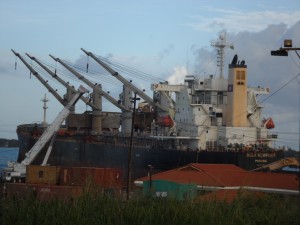 Education tax is running 7.7 percent ahead of projections and 13 percent above last year’s intake. Contractors levy is up over 2016 by 27.5 percent ahead of forecast, to reach $391 million and some 33 percent ahead of the intake for 2016 of $293 million, a good indicator of the health of the construction sector.
Education tax is running 7.7 percent ahead of projections and 13 percent above last year’s intake. Contractors levy is up over 2016 by 27.5 percent ahead of forecast, to reach $391 million and some 33 percent ahead of the intake for 2016 of $293 million, a good indicator of the health of the construction sector.